In 2026, the blend of technology and fitness is changing the way we work out, giving fitness enthusiasts a high-tech alternative to the gym at their fingertips. With IoT, artificial intelligence, and virtual reality, fitness apps can now offer personalized and engaging workouts that go beyond one-size-fits-all routines.
Innovative fitness app experiences have struck a chord with the audience: all top health and fitness subgenres experienced stable consumer demand in 2025, with health and fitness apps generating a record-breaking $3.8 billion of in-app purchase revenue. The market dynamics underscore the popularity of the fitness app industry, with the global fitness app market size projected to reach $23.2 billion by 2030, at a CAGR of 13.8%.
So, if you’ve ever mulled over the idea of creating your own fitness app, this might be the perfect moment to take the plunge. In this blog post, we’re sharing top fitness app ideas to inspire your next product by going over the trending categories in the niche.
7 booming fitness app ideas to use in 2026
When it comes to the fitness and wellness industry, there's always room for invention. In 2026, tech-savvy experiences, driven by technology advancements, continue to push boundaries, boosting fitness app usage.
AI-based fitness apps
Enabled by AI functionalities, workout apps can build on unique user data to generate personalized workouts, adjust recovery strategies, and provide tailored meal plans and dietary recommendations. Such apps can also leverage artificial intelligence to deliver personalized interactions, such as virtual fitness coaches and smart chatbots. AI-driven video assistants can replace human trainers and automatically adjust workout sessions for better results.
Examples of AI-based fitness apps
One of the apps banking on AI innovations is Zing Coach, a fitness application that delivers hyper-personalized workouts to over 1 million users. This fitness app combines advanced AI technology and the expertise of world-class fitness and wellness specialists to determine the most effective and engaging route for users to achieve their fitness goals and personalize the entire journey.
Its AI Recommender relies on large language models and continuous feedback to dynamically adjust the user's fitness journey based on real-time input, including performance data, real-time vital readings, activity levels, and health and lifestyle data. Also, the app incorporates computer vision-based tools for movement analysis, fitness testing, and body composition scanning. Additionally, Zing Coach uses emotionally intelligent coaching to fine-tune sessions based on the user's emotional profile.
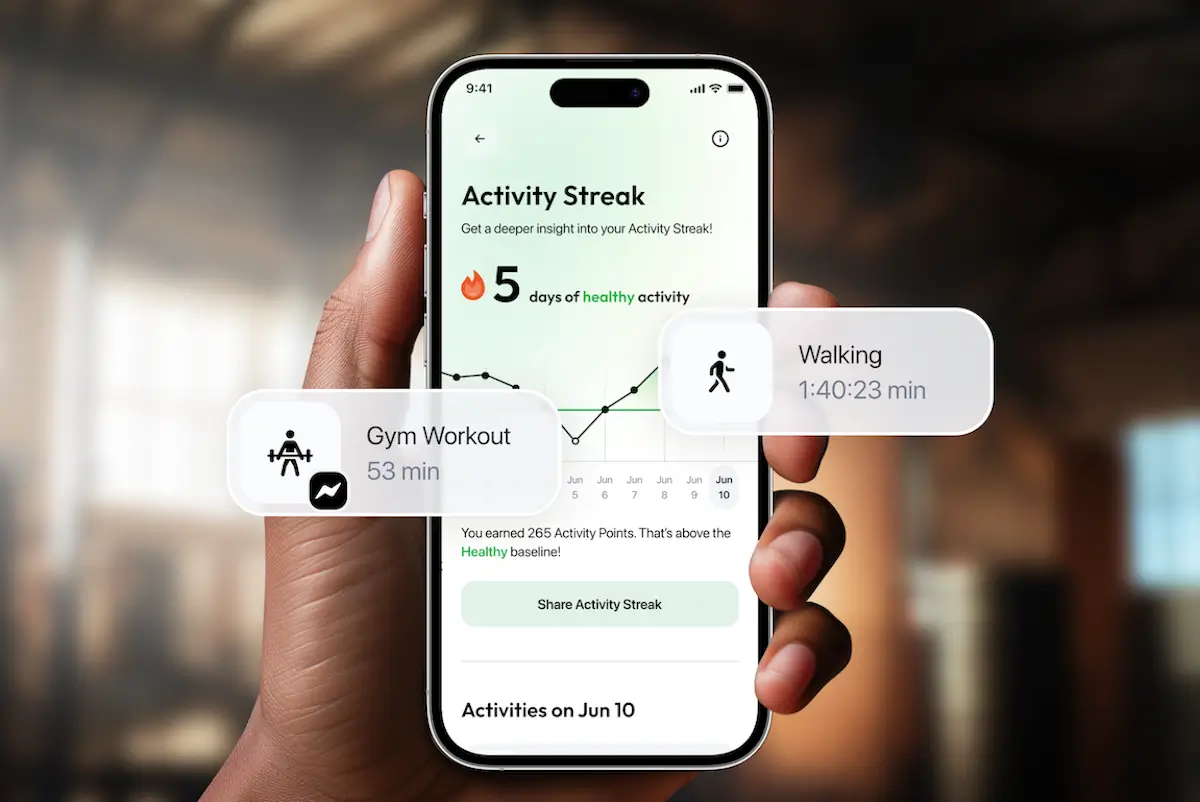
Another prominent AI-driven app is Ochy. The app uses a proprietary pose estimation algorithm to analyze short running videos uploaded by users. The AI behind Ochy, underpinned by 200+ peer-reviewed studies, spots what's off and suggests personalized corrective exercises. In 2025, the app raised €1.7 million in pre-seed funding and teamed up with England Athletics to give runners access to AI-powered gait analysis and personalized coaching.
.png)
One-on-one fitness apps
One-on-one fitness applications bring the experience of working with a personal trainer or coach to your fingertips. These apps connect users with personal coaches for real-time interaction and tailored workout plans.
Examples of one-on-one fitness apps
The Echelon Coach application provides personal training sessions with top personal trainers. The workout app engages users by mixing and matching various fitness styles, including boxing, cardio, HIIT, and yoga workouts.
In addition, Echelon Coach also has nutrition and diet guides, physical therapy, pre- and post-natal support, and meditation.

The Future app brings unique, one-on-one digital training personalized according to the user's fitness level and goals. A Future coach is a real person who provides on-call support to the members on their fitness journey. According to Future, 94% of members talk to their coach about nutrition, stress, sleep, and injury. The Future app allows coaches to message users, build a new training plan each week, and respond in real time when the user needs adjustments or has questions.
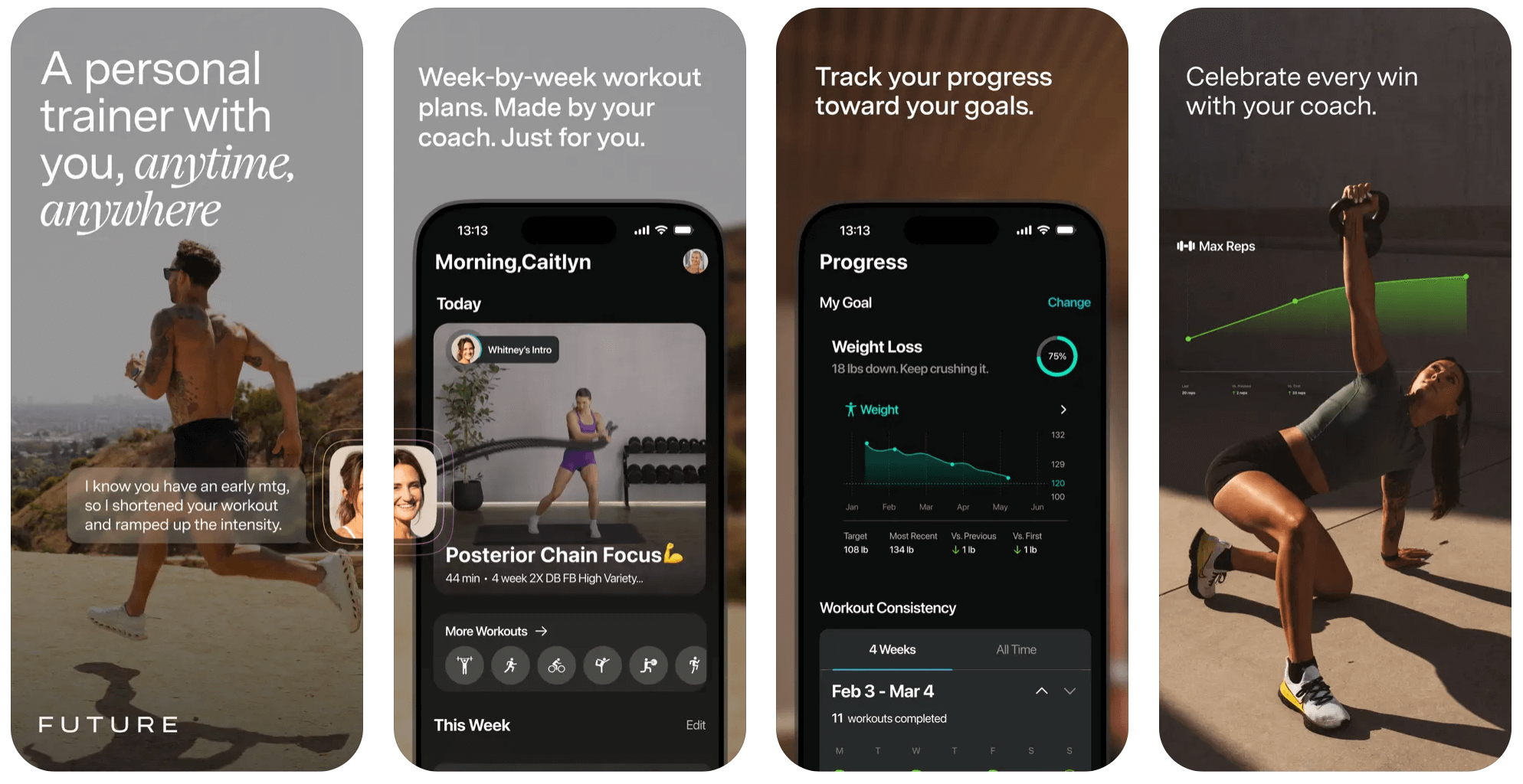
Meditation and mindfulness apps
Meditation and mindfulness apps can help people reduce stress, combat anxiety, hone their focus, and improve sleep through guided meditations, advanced breathing techniques, soundscapes, and immersive experiences. The global meditation app market is expected to grow from $1.9 billion in 2025 to $14.2 billion by 2034.
Examples of mindfulness and meditation apps
InsightTimer provides access to a free library of 200,000 guided meditations, which is the biggest collection of any meditation app. InsightTimer is a community-driven platform for 17+ million users who can participate in group meditations, live events, and community circles. The creator-friendly monetization approach (donation plus subscription model) helped InsightTimer attract a great number of mindfulness teachers, yoga instructors, and spiritual guides.
On the feature side, InsightTimer has a customizable meditation timer and a set of premium add-ons, including silent meditation support, tracking progress, and niche interest groups.
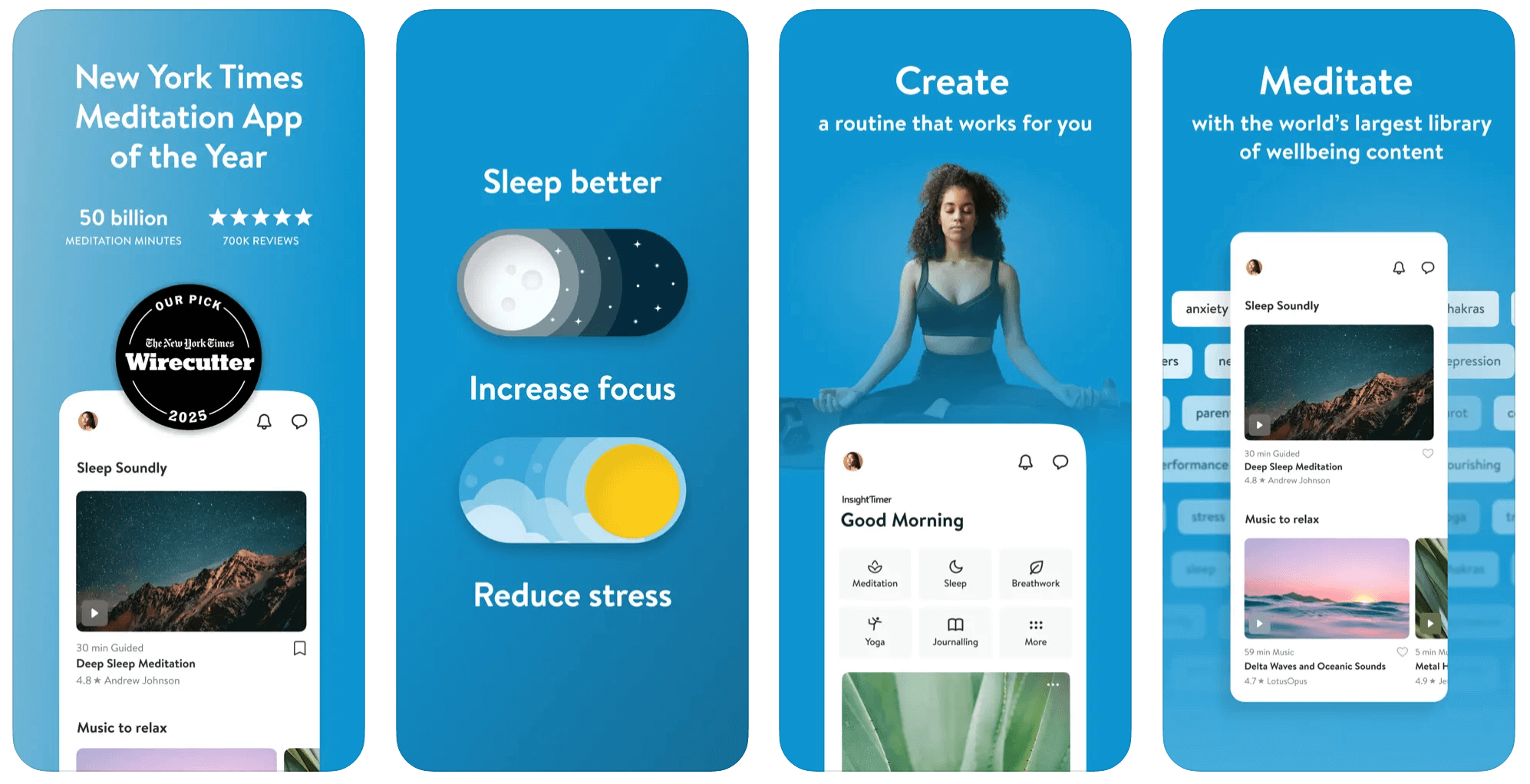
Trusted by over 8 million users and over 100,000 paying subscribers worldwide, Aura is billed as a one-in-all health and fitness app that has everything one needs, including meditations, stories, and CBT, to improve their well-being. The application also gives access to a roster of therapists, coaches, and storytellers, both via pre-recorded content and personalized guidance.
What's interesting about this app is that it became the first wellness platform to leverage the marketplace model and use data science to serve personalized content and wellness recommendations.

Diet and nutrition apps
If you want to create a fitness app, you can also build upon the concept of diet apps. These apps help track calories, improve nutrition habits, and offer her types of self-monitoring, like most fitness tracking apps. This fitness app segment was valued at $2.1 billion in 2024 and is projected to reach $4.56 billion by 2030.
Examples of diet and nutrition apps
Favored by over 100,000 users, ZOE is a personalized nutrition platform grounded in a scientifically proven approach to nutrition. Based on the results of at-home testing, the app analyzes users' blood glucose, blood fat, and gut microbiome — and then transforms the insights into a personalized program. Each logged meal receives a ZOE score that reflects its impact on the user’s health. Lately, the app has introduced a new risk scale that categorizes processed foods into four groups based on their risk.
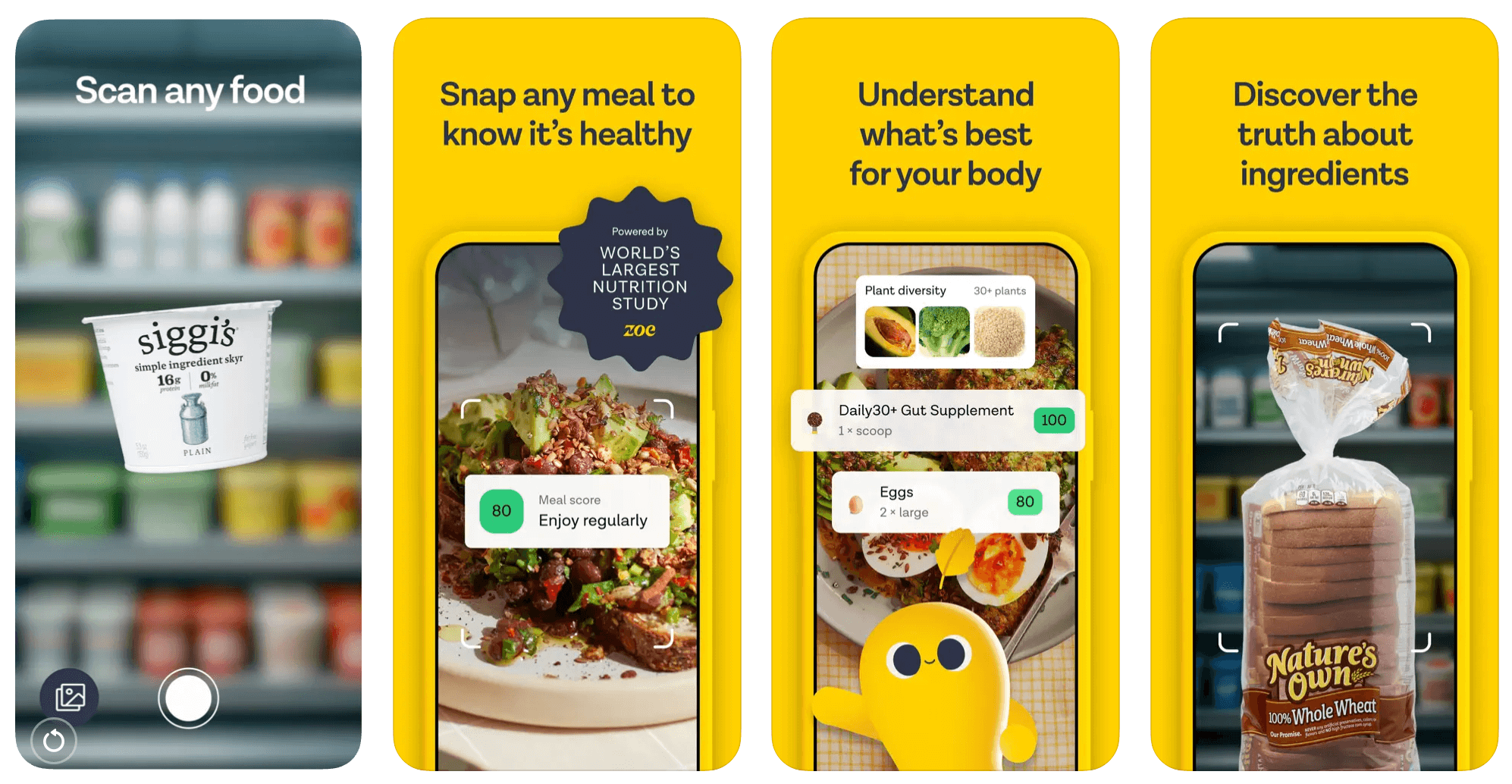
Fooducate is an app that helps users enrich their diet with nutrients and maintain healthy eating habits. This app uses a particular algorithm to grade foods based on their nutritional value. The more nutritious the food is, the higher grade it gets.
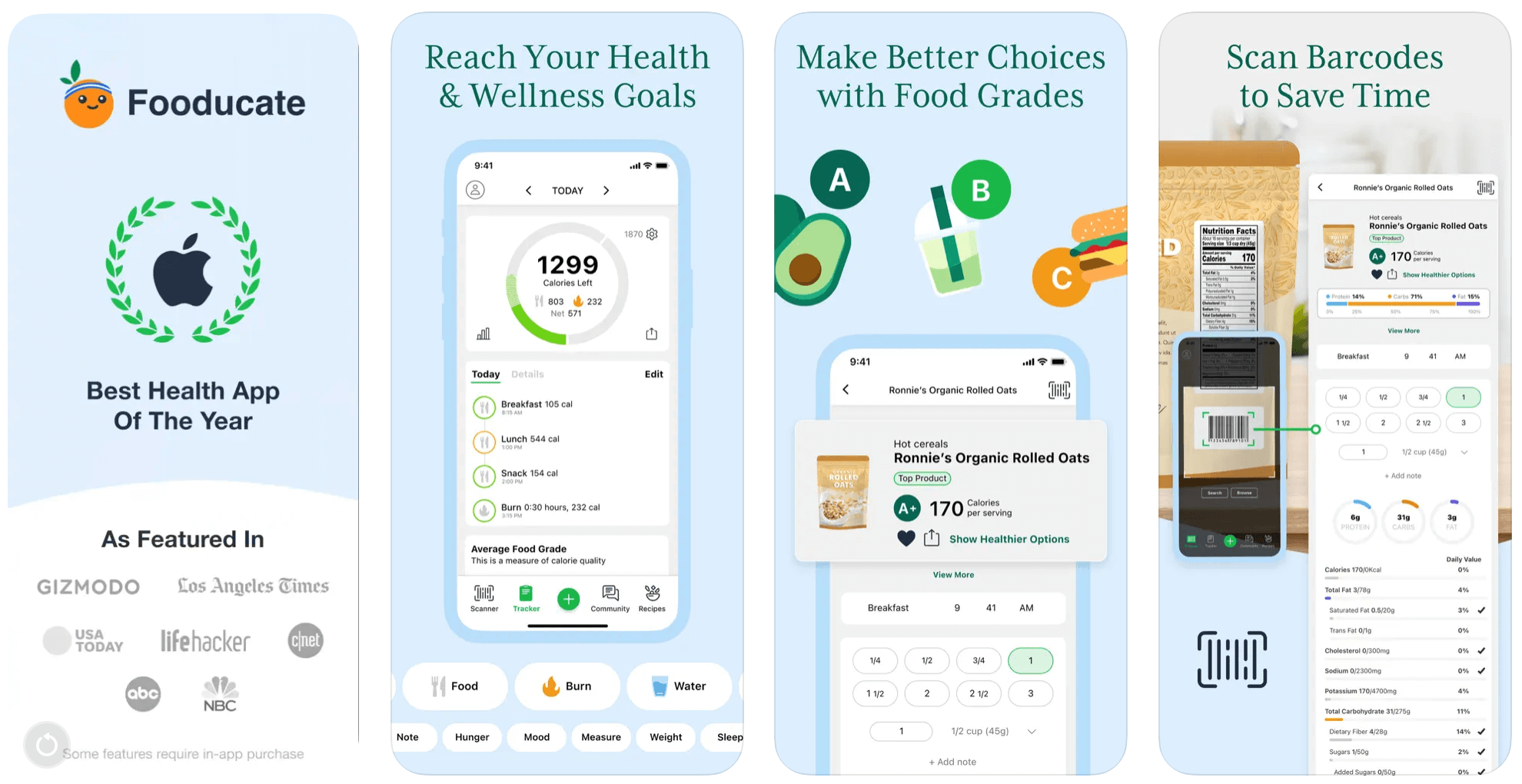
Members can easily add foods by scanning a barcode or searching for them by name. Then, users will be asked to enter how much of the food they have eaten, and Fooducate automatically calculates its calories, carbs, protein, and fat. The app can also track physical activity, sleep, and mood.
Connected fitness apps
Connected fitness apps bridge the gap between technologies and fitness. They allow users to get the gym experience without leaving their homes. IoT, AI, and ML technologies level up connected fitness apps.
During the pandemic, Internet-connected fitness gear and apps have become increasingly popular. In fact, the global connected gym equipment market stood at $1.2 billion in 2024 and is slated to reach over $9.9 billion by 2033.
This growth is partly driven by the growing need for hybrid workouts among Gen Zers: 72% of regular exercisers are doing both gym and out-of-gym workouts. In response to this trend, most companies in the field are now revamping their business model, offering smaller, more affordable products to supplement hybrid workouts. This will allow market players to live side by side with traditional fitness instead of competing with it.
Examples of connected fitness apps
Kabata is the companion app behind the world's first AI-powered dumbbell. Via the app, users can access real-time coaching and personalized training plans developed with Kabata's cutting-edge technology. Kabata also relies on state-of-the-art velocity-based training to optimize workout intensity based on the rep speed.
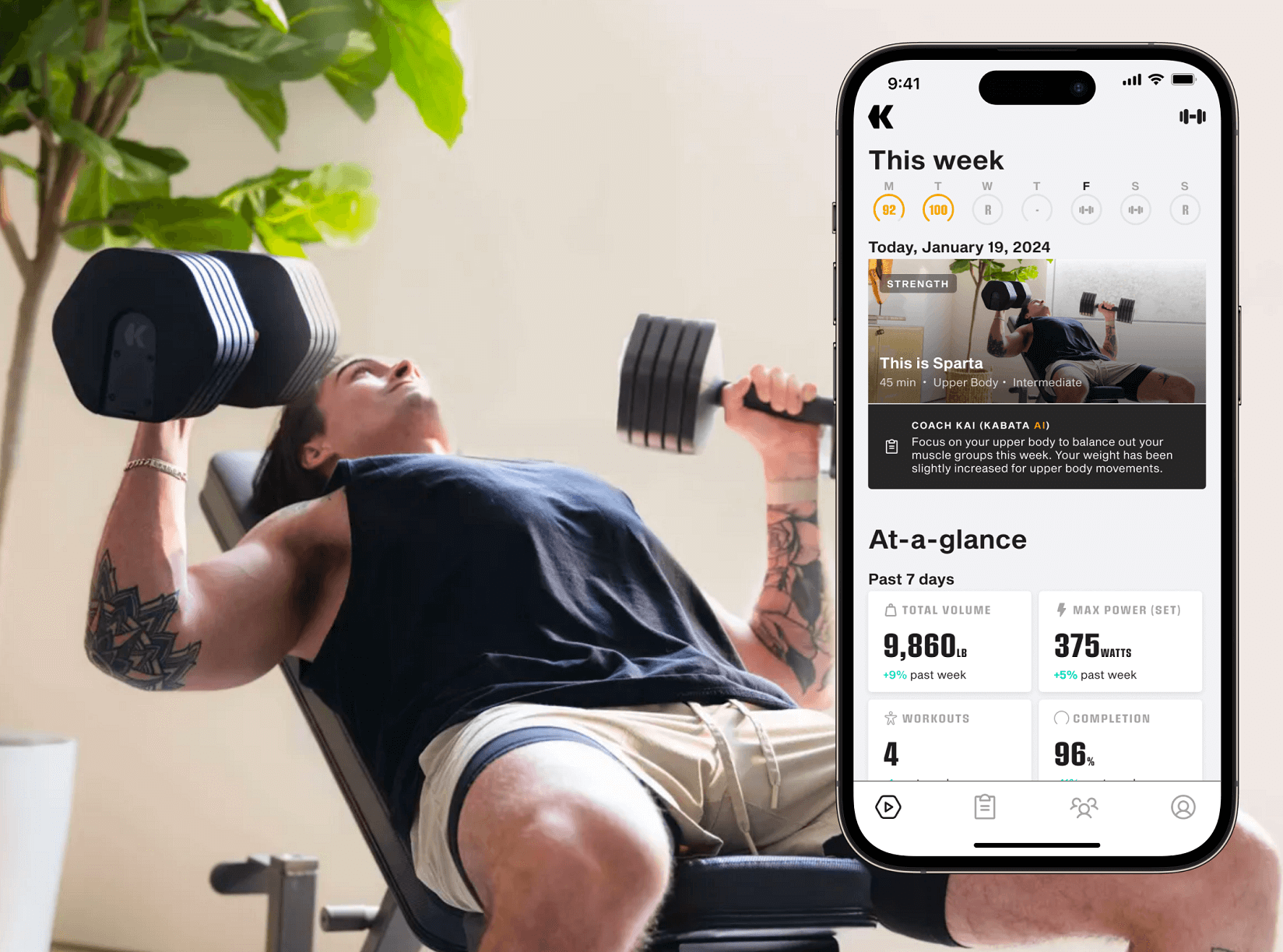
The Tonal app is the companion mobile app for a smart home gym ecosystem that focuses on personalized at-home training. The app helps users keep track of workouts and their progress, connect with friends, and get personalized training programs based on fitness goals. In addition, the companion app bundles hundreds of guided workouts, tips on training and nutrition, and inspiring stories.
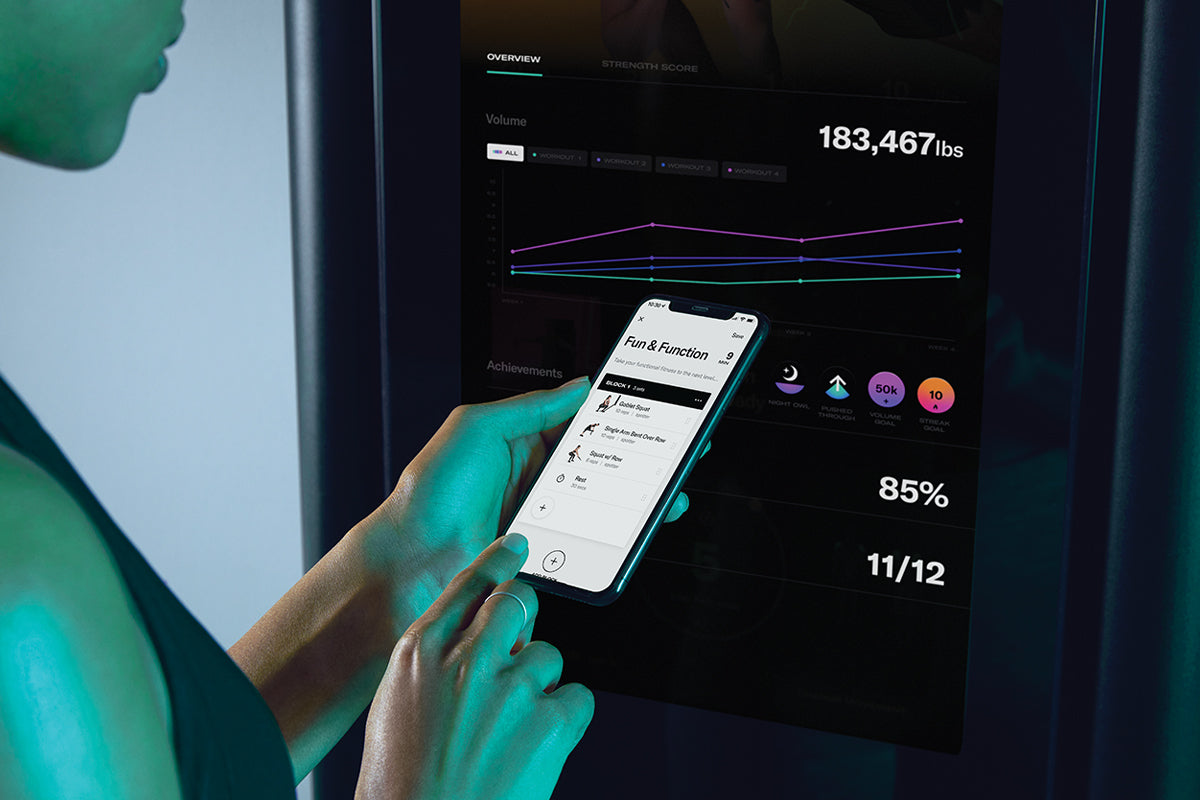
Physical therapy apps
Although virtual care might seem at odds with the high-touch experience of physical therapy, dedicated mobile apps can bridge the gap by making home exercise protocols easier to follow for patients. Physical therapy apps come in different shapes and forms, including specific tools for measurements, exercise trackers, all-in-one rehabilitation apps, and more.
It's a lucrative market, too, as the physical software market was valued at $1.5 billion in 2025 and is forecasted to surpass $3.8 billion by 2034. This growth is associated with the benefits physical therapy apps deliver for the healthcare industry, including reduced admin, subdued staffing strain, and minimized billing errors.
Examples of physical therapy apps
Luna is a platform that matches individuals with over 3,000 licensed outpatient therapists for at-home 1:1 treatment. The app is premised on the integrated care coordination model, allowing users to personalize their care plan with doctor notes, access prescribed video exercise plans, and have their prescriptions coordinated with the doctor. The platform also includes secure messaging, progress tracking, and data-based insights.

In a traditional physical therapy setting, patients are often limited in the number of sessions. Similar to Luna, the Kins app improves the accessibility of physical therapy by offering one-on-one sessions with vetted PTs, either in-home or via telehealth. The app matches eligible individuals with vetted therapists, who then draw up personalized programs for individuals based on the results of in-person assessments.

Social fitness apps
Social fitness apps combine the joy of social media connections with fitness experiences. These applications provide a platform for group workouts, challenges, and communication with like-minded individuals. Thanks to the social element, social fitness apps offer an ingenious way to foster a sense of belonging and boost motivation while also making it easier for users to set and achieve fitness goals.
Examples of social fitness apps
FITFCK is a one-of-a-kind platform that blends fitness and dating. The application is designed to connect hardcore gym goers with shared fitness interests through live dating events. Just like a regular dating app, FITFCK allows users to connect through gym-related icebreakers, swipe through potential matches, and engage in direct messaging.
Since its launch in 2020, the app has climbed to over 10,000 members and 1.3 million app engagements.
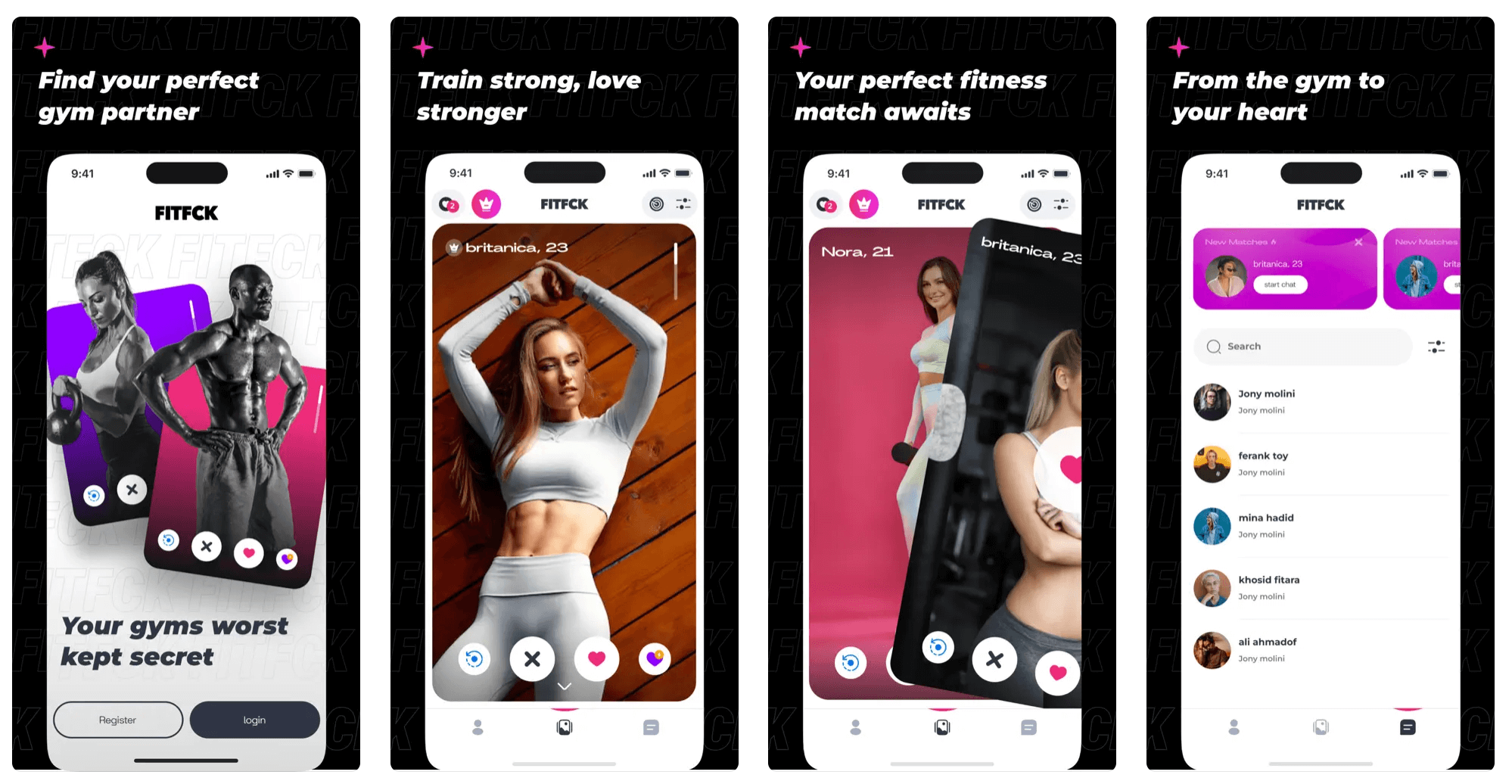
Rounding out our list is GoJoe, an app combining employee engagement and well-being into a single interface. GoJoe comprises multi-team challenges, team leaderboards, and interactive tracker maps, along with curated content and news feeds to boost employee engagement, improve team morale, and promote employee wellbeing.

Tips for developing fitness apps in 2026
Several fitness apps are being launched every day. Given this competitive market, you have to integrate some unique twists to give more edge to your fitness app and promote early sign-ups. Below, we’ve curated a list of competitive functionalities to consider for your app.
Build a community
Having a social element is a crucial aspect when developing a fitness app. Not only does it allow users to engage actively, but it also motivates more people to participate competitively. According to Strava research, group runs, rides, and hikes go 40% longer than solo efforts because social training adds more accountability and sets up participants for stronger performance.
You can add community elements to your app, including goals achieved, group chats, and leaderboards, to allow users to interact with this content and share their progress on social media.
The SweatPals taps into the social fitness concept, making it easier for users to discover nearby fitness classes, events, and like-minded communities. The app also gears up its business members with everything they need to grow a sustainable fitness business, including event ticketing, memberships, POS, and other features.
Add gamification elements
Leaderboards, personal achievements, progress bars, and badges can help you engage and retain users, making fitness less of an arduous duty but an exciting adventure. But why not take it to the next level, like the Paceline app did? This app financially rewards fitness enthusiasts for their progress and achievements. Users can then withdraw their earnings from the app using a branded credit card.
Personalize fitness experiences
Over 60% of consumers use AI to monitor workouts, and 49% leverage it for nutrition. That's because artificial intelligence, whether it's generative AI, machine learning, or computer vision, makes the in-app experience more impactful through tailored recommendations based on user data. The AI engine also allows fitness apps to adjust workouts on the fly, analyze technique, and offer personalized group challenges.
For example, FitnessAI takes advantage of AI technologies to provide custom workouts with optimal sets, reps, and weights.
Synchronize with wearable devices
Nowadays, fitness enthusiasts have multiple devices, including smartwatches, fitness bands, smart glasses, and other gear, to track and improve their fitness performance. Naturally, they expect their go-to fitness app to seamlessly fetch and consolidate this data, which makes wearable integration an essential feature for apps that want to stay competitive.
Merge fitness with healthcare and longevity
Over 60% of gym-goers are prioritizing well-being routines to maximize healthspan. With the focus tilting from health to form, many fitness businesses began merging fitness with healthcare-related services. For example, Bay Area chain FITNESS SF has introduced healthspan diagnostics as a membership option, while Equinox has partnered with Function Health for biomarker-based training programs.
In the same vein, fitness apps are expanding traditional workouts to include preventive health insights, biometrics, personalized wellness recommendations, and other features to promote a holistic well-being approach.
Maxiom builds upon this concept: the app blends performance, recovery, and longevity. At the core of the app is Max, an AI “SmartCoach” that learns from the user's biology, lifestyle, wearable data, and even DNA-informed biomarkers to tell the user exactly what to do to optimize their day.
How to build a fitness app
First and foremost, you should set your vision for the future product. This is usually done during the Product Discovery stage, when your development team helps you outline the key features, UI/UX design pillars, necessary integrations, and other essentials. Usually, this initial research phase ends in an app prototype that you can use to validate your business idea and get early user feedback.
Next, your fitness app development team will move on to building a minimum viable product of your application. This is a cost-efficient version of your fitness app that includes only the core features needed to launch and test your concept.
Your fitness app developers then roll out the MVP in the wild and gather real-user feedback to later iterate on the app version.
Let’s hit the ground running
The fitness industry has had its ups and downs over the last few years. While specific applications have lost their dominance, the market still favors newcomers with bold and fresh ideas. There are no set rules for building a successful fitness app, but there are various functionalities that you can add to your fitness app to win over users.
At Orangesoft, we've been building apps for 15 years, and we can help bring your app idea to life. Contact us to book a session and discuss your ideas.
